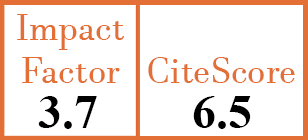Reviews
Geriatric syndromes in patients with rheumatoid arthritis: a literature overview
F.A. Cleutjens1, A.E. Boonen2, M.G. Van Onna3
- Department of Internal Medicine, Division of Rheumatology, Maastricht University Medical Center, School for Public Health and Primary Care (CAPHRI), Maastricht University, The Netherlands. fiona.cleutjens@maastrichtuniversity.nl
- Department of Internal Medicine, Division of Rheumatology, Maastricht University Medical Center, School for Public Health and Primary Care (CAPHRI), Maastricht University, The Netherlands.
- Department of Internal Medicine, Division of Rheumatology, Maastricht University Medical Center, School for Public Health and Primary Care (CAPHRI), Maastricht University, The Netherlands.
CER11276
2019 Vol.37, N°3
PI 0496, PF 0501
Reviews
Free to view
(click on article PDF icon to read the article)
PMID: 30620280 [PubMed]
Received: 28/03/2018
Accepted : 27/08/2018
In Press: 19/12/2018
Published: 10/05/2019
Abstract
Rheumatoid arthritis (RA) is a chronic, systemic inflammatory disease of unknown aetiology which principally affects the small joints of the hands and feet. The incidence of RA increases with age and peaks within the age range of 70 to 79 years. In the ageing population, therefore, it is expected that the number of patients with RA will grow proportionally and more patients will have comorbidities but also so-called geriatric syndromes (GS). GS are clinical and multifactorial conditions in older persons that are associated with poor health outcomes, do not fit into disease categories (comorbidities) and require a multidimensional treatment approach. Patients suffering from RA may be at increased risk for GS. Therefore, it is important that rheumatologists are knowledgeable about the constructs represented by GS, understand the main risk factors, and gain insight in how to recognise these syndromes. Limited awareness of the (risk for) GS in patients with RA among rheumatologists may lead to ineffective management of RA. Our objective was to provide a comprehensive overview about the prevalence, aetiologic factors and health consequences of the most important GS in patients with RA.


